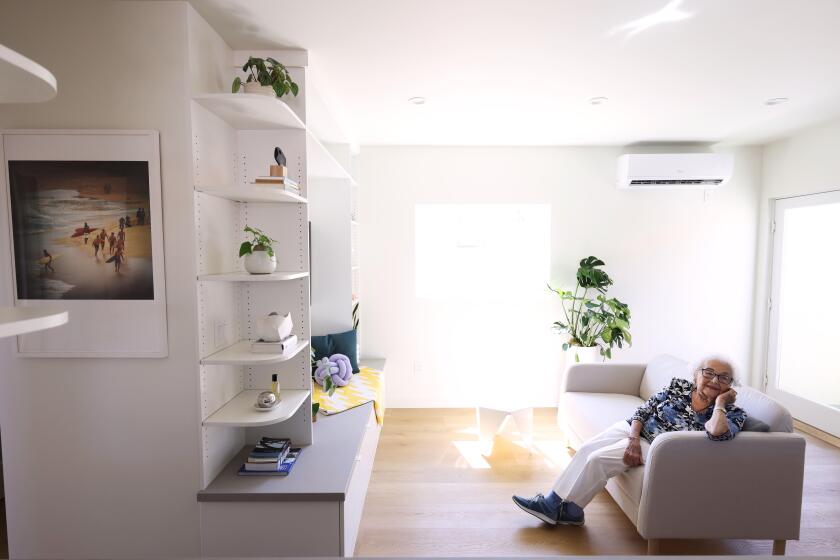Don’t Seize Land for Studio
Building a complex of sound stages in North Hollywood’s perpetually flagging heart may be just the project to give the neighborhood a boost--but not if it means booting out other merchants and property owners.
Developer J. Allen Radford wants to build 43 acres of studios next to what someday will be a subway station in the forgotten middle of North Hollywood. Radford wants to cash in on the current boom in entertainment production, which has pushed demand for filming space to some of the highest levels ever. At the same time, Los Angeles redevelopment officials hope Radford’s project would help turn around one of the San Fernando Valley’s shabbiest commercial districts and provide a focal point for the emerging NoHo arts district.
Both goals--profit and community development--are admirable. They deserve the support of a neighborhood that has watched too many big promises vanish once the construction dust settled. Since it was established nearly two decades ago, the redevelopment area at the heart of North Hollywood has been an uneasy mix of success and failure.
At their best, redevelopment areas give cities the power to make sweeping changes to rundown neighborhoods. The two main tools: tax-increment financing, which allows cities to bet against future revenues, and eminent domain, which allows cities to condemn property for big projects. Ideally, these big projects serve as magnets that draw future investment. That’s the idea, anyway. Yet despite building or refurbishing 3,000 housing units and more than 450,000 square feet of commercial, retail and parking space in the last 19 years, the Community Redevelopment Agency has yet to truly turn North Hollywood around.
Backers suggest that Radford’s project could be the one that finally starts to draw other merchants and residents. They may be right. Built next to a subway station, Radford’s plan for shops, offices and plazas in addition to the studio would be the kind of dreamy project urban planners claim can create a sidewalk culture, as along Santa Monica’s Third Street Promenade. To that end, Radford deserves the consideration he’s already received from Los Angeles officials--mainly moral support and a commitment to help secure federal grants and loans.
But the project does not appear to be the kind that warrants the use of eminent domain--by far the most powerful and feared tool in the city’s development kit. Leasing production space is a low-margin, unpredictable business. Likewise, the white-hot entertainment industry has lately shown some signs of cooling. Displacing the owners of existing businesses or forcing property owners to sell their land in order to clear room for Radford’s studio is a risky trade.
Radford’s proposal has promise, but too many promises have turned out to be empty in North Hollywood. CRA officials are wise to help Radford get his idea off the ground and, ultimately, make it a reality. They have the tools to do it. But they should leave their most powerful tool in the box.
More to Read
Sign up for Essential California
The most important California stories and recommendations in your inbox every morning.
You may occasionally receive promotional content from the Los Angeles Times.






